Dill is often used in various dishes as decoration. In summer vegetable salads, he simply indispensable. Dill is useful in that it contains quite a lot of vitamins and minerals. It is necessary for the prevention of spring avitaminosis. Therefore, this greens is so often grown on personal sites. The cultivation of dill in the greenhouse allows you to extend the life of the culture. This is due to the fact that umbrellas are formed in the open air, after which the greens dries and dies. This can be avoided when growing dill in a greenhouse in winter. The fact is that in addition to elevated temperatures, stable humidity is also preserved here. We will tell about all the intricacies of this process further.
Basic moments
Grow dill in the greenhouse - not so simple, as it seems at first glance. There are several recommendations that should be followed in order to get a good harvest:
- This culture is quite demanding to the soil. Therefore, it is necessary to choose its composition. In addition, dill for full growth needs suitable lighting.
- In addition, you do not need to try to get a quick crop. High-quality dill, filled with all necessary useful substances, can only grow in a couple of months after seed landing.
- If the approach is correct, the first harvest is quite early, and earlier than when cultivating culture in open beds. In this case, the yield will be more. In properly selected conditions in a greenhouse from one square. The meter can be obtained about 1.5 kg of dill.
- If the temperature in the greenhouse when landing is less than +14 degrees, then it is necessary to heat the ground in the beds and the greenhouse itself, until the seeds are sown. Otherwise, seedlings may die.
- Dill can begin to plant in early April. But then it will be necessary to provide a culture with an additional light source. It is also required to prepare a seed container. The fact is that growing greens of early spring directly in the soil will not be possible due to its low temperature.
Since the roots in this culture are sufficiently massive, then for normal growth, it is required that the container depth was at least 210 mm. Preferably to grow dill to pick up long and deep wooden cells. As an additional ventilation, it is required to make holes at the bottom. It will not allow moisture in the root system. The roots of this culture quite deeply goes into the ground, but at the same time they practically do not branch. Therefore, a variety of seeds can be planted on a small area without any problems.
How to grow dill in the greenhouse? It is necessary to properly prepare the soil to plant plant. Dill in winter in the greenhouse grows perfectly in the ground, which contains quite a few mineral substances. For this reason, to create the best mixture, you need to take several parts of the turf and one part of the peat. For convenient root growth, due to their special structure, the land must be loose and slightly humid. Therefore, it will be necessary to loosen it from time to time. Even before the seeds are planted, there will be a portion of mineral fertilizers.
If a greenhouse from polycarbonate is installed on the summer site, then the heater can be placed inside. Soil in boxes before planting seeds can be quenched. If the plans to grow dill in a small film greenhouse, it is recommended to warm the ground with boiling water, and after planting seedlings, put a large container with boiling water near the greenhouse. When it is done, the greenhouse is carefully closed to save the heat.
Preparation for landing
To this stage, you must treat much liability. After all, such a culture, as dill, is quite thermalid, and begins to grow only under favorable conditions. After the seedlings proceed, they are able to withstand a decrease in temperature, but if it drops below 9-11 degrees, it usually slows down and worsens the growth of shoots. In the greenhouse, the temperature is maintained at a certain level and does not fall below 14-16 degrees, which is good conditions for the development of culture.
The active growth stage is usually provoked by artificially. It is quite simple to germinate seeds of culture, but, nevertheless, you need to know some subtleties. First of all, they are laid out on one fine layer of tissue (you can gauze), and on top are wrapped in another layer. After that, they should be poured with warm water and put on the windowsill. In order for the sprouts to sprout faster, the sun rays should fall on the gauze, and heated it. In a warm wet environment, the seeds sweep faster and open.
In general, it is necessary to engage in germination of seeds in advance. While they are not fixed, it is necessary to add a little liquid so that the fabric does not dry. 5 days after the seeds proceed, they can be planted in place. When landing between seeds, it is enough to leave 20-30 mm. But it needs to be done carefully so that the shoots are not damaged.
During the landing, the seeds can not be touched by his hands. Therefore, for planting in the well, a small plastic spoon is used. A hole should be a depth of no more than 20 mm. By the way, these wells can be made by the same plastic spoon. In addition, in the places of the landing of greenery should not be tamped to the soil. Recommended seeds simply sprinkle, after which it is warm water. Under the influence of moisture, the Earth itself is a little falls.
Subtleties landing
Dill may grow bad for several reasons. First of all, this is due to the fact that it is too late. In fact, it is possible to sow under the winter or after the snow came down. But it depends largely from the climate. In addition, dill can grow badly, if it is planted too thick. In this case, soon after sediments, the culture goes to the trunk, which is undesirable.
Dill, by the way, you can sow on any free place of the country area, for example, it can grow on one bed along with onions and garlic and not interfere with it. If you want to sow culture in the second half of summer, it is best for this purpose to highlight a bed in a half. The fact is that this plant requires creating certain conditions. Seying dill follows in wet land, but not thick. And be sure to pour after landing. In a dry ground, he will immediately go to the trunk.
Dill loves the magnificent land, so the soil is recommended between the rows. In addition, culture prefers to grow on loose rich soils. It is quite bad, it is accepted on a marshy and clay land, as well as in low-spirited places. He also does not like when the soil is too acidic.
To moisture, dill is not very demanding. Nevertheless, he reacts well to sufficient watering. If there is no moisture, the yield is usually reduced. Culture loves solar places, but if it is in a half, then also gives a good harvest.
This greenery refers to one-year one. Therefore, in one stage of growth from seeds, strong seedlings gave new seeds. It usually appears one rod with two elongated leaves, which differ in their appearance from the leaf of an adult plant.
The soil under the sowing must be prepared in advance. In particular, it is required to make humus. It is useful to fow the ground with superphosphate. Seeds can go over the season twice - in spring and autumn. Some believe that the autumn dill is better to taste.
All gardeners know the specific smell of this culture. It usually appears from a 3-6 leaflet. And the older the plant, the flavor is more saturated. Dill grows pretty quickly. Vintage can already get 35 days after sowing. When the greens are assembled, the plant is cut or left until an umbrella appears with seeds.
Bush grade
The bush grades of culture can be collected already in 45 days after seeding. This dill does not bloom long. Thanks to which it turns out quite a long time, during which it can be collected. From ordinary trunks varieties is distinguished by appearance. So, the young plant has no stem. The leaves are growing directly from the root. At the same time, the inflorescence is raised, and the stem is not formed for a long time. Therefore, it is impossible to pull it with the root. It is enough just to break the larger and healthy leaflets. New ones will grow new. After 4 days, the harvest from this plant can be collected again. If we compare with conventional varieties, they have a flower stem. In addition, when large lower sheets are torn, they do not grow new on their place.
Today there are many varieties that differ in maturation. Therefore, you can sow several of them in 1-2 months, so that all the season you have greens in the country. Breeding greenhouses allow planting culture throughout the year. For example, if you put an Amazon variety, then in about 1.5 months there will be a greens that can be used for about two months. In the first half of June it is recommended to sow the culture re-so that the greens will be until the end of August. You can get another harvest in the fall, but this late dill usually does not grow to umbrellas.
Landing in open soil
For successful cultivation of dill in beds, some important, but simple rules must be observed:
- Before planting dill in an open soil, it must be properly prepared. Earth should be rich in nutritional components and it is desirable that it has a loose structure. With a sufficiently long lighting day and abundant irrigation, the first sprouts will appear pretty quickly.
- Do not put a culture in the acidic soil. It is better to neutralize it with the help of lime.
- When buying seeds, you must purchase several varieties with different maturations. Thus, as already mentioned above, throughout the entire period you will always have in the country of fresh greens.
- The seeds of the dill will germinate faster if they are pre-closed in water. They quickly absorb moisture and swell. Dry seeds in water will be enough to delay during a couple of days, and then spend their landing on the beds.
- It is important to choose the right time to land the dill. It is best to plant in front of the first frosts or early spring.
- When the first shoots appear on the garden, you need to carefully care for them. In particular, fertilizer and weeding are required. It is best to use potash feeding.
- There should be a sufficient distance between neighboring beds. Therefore, when landing, it is necessary to observe the desired distance. There must be at least 320 mm between the rows, and between the plants themselves are at least 120 mm. If culture grows at home, then this distance may be less.
- For landing you need to choose only solar places. If dill will grow in the shade, then it is likely to be less useful and besides pale. In this case, even careful care will not help. At home, dill can be grown in the package on the windowsill, but it must stand on the window that goes out on the sunny side.
Diseases and pests
The most frequent problem for dill is the TLL. It can be struggling with it in various ways. And the safest is considered to use nettle. It allows you to give culture immunity to Tel. For this, nettle is first finely cut, after which it insisters for 10 days. Then this innocence is poured.
Pests are often fighting with ash. In order to prepare the remedy, it is poured with hot water and leaves for the night. In the morning, the resulting infusion it is necessary to strain and add an economic intracable soap into it. The obtained variation solution is abundantly sprayed. An effective means of small pests are still considered the leek husks and citrus crusts. For the preparation of the solution, the raw material is poured first with hot water and is insisted for several days. It should be processed only after the first signs of the Tlya.
Dill is characterized by such a problem like a red shade of leaves. Such a sign indicates that there are few useful substances in the soil, especially nitrogen. For this reason, it is necessary to periodically feed the soil, but not too much to make. After all, dill is a plant that strongly absorbs fertilizers.
As for the disease, the main problem here is the infectious disease, called a fusarious wilment. It is usually transmitted with seeds. Most often occurs in the case of a sharp air temperature difference. How to treat him? After all, the chemistry dill is impossible to process, because It is used in food. Therefore, you need to act differently. Since the disease is transmitted with seeds, they should be prohibited before sowing. For this, they can be soaked in a weak solution of manganese. If the site is already infected, then before sowing in the soil, such a drug is made as tripohodermine. The principle of its action is based on the actions of the argument of mushrooms, i.e. It is a natural means. But for the dispute, it is necessary to create certain conditions, so the drug is usually made in wet soil. If the earth is dry, then before sowing it. After that, sprinkle with peat mortar with mushroom disputes. This drug successfully copes with zelen infectious diseases.

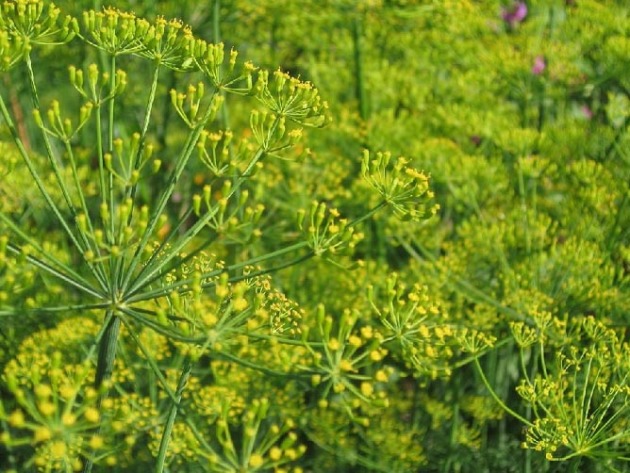
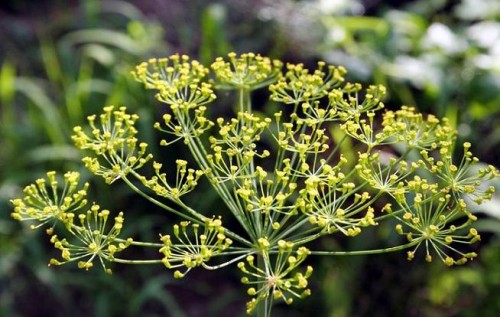


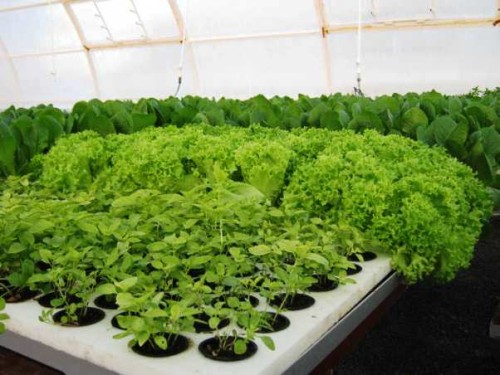
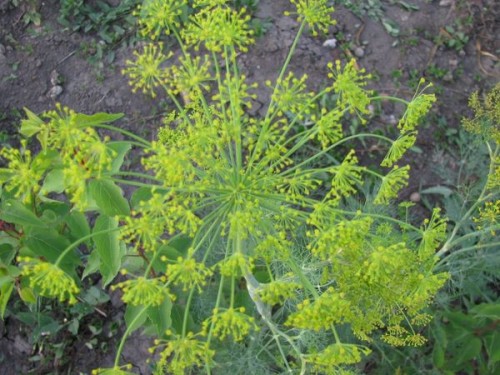
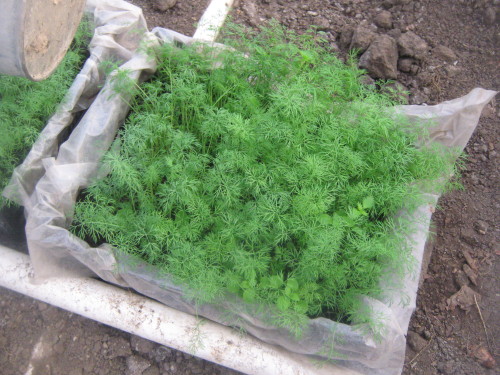
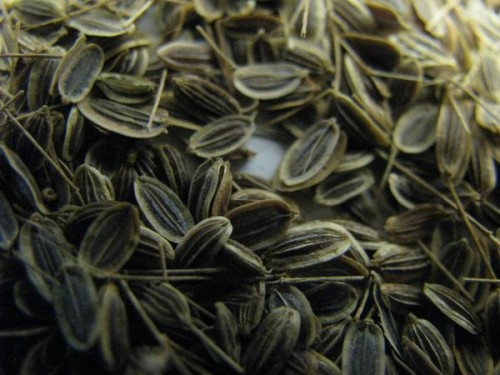
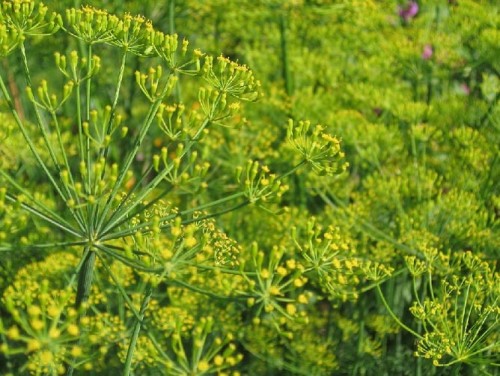












 Start a discussion ...
Start a discussion ...